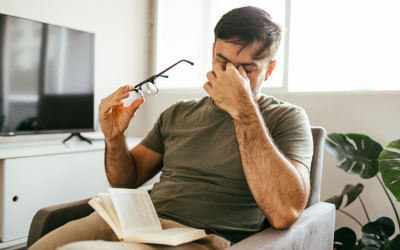Break Free from Migraines: Understanding the Phases and Triggers
Migraine headaches rank among the top 20 most disabling medical illnesses worldwide. Amazingly, over 10% of the population, including children, suffers from migraines. Nearly one in four U.S. households includes someone with a migraine disorder. Luckily, there are proven methods that can help those suffering from this debilitating condition. Take the first step toward a migraine-free life by learning how to identify the phases and pinpoint triggers.
Migraine Phases
Unlike other types of headaches, migraine headaches can cause symptoms beyond pain. Nausea and vomiting, lightheadedness, sensitivity to light (photophobia), and other visual changes are common. A migraine headache may last from four to 72 hours. Migraines are also unique in that they have distinct phases. But not all people have each phase.
The phases of a migraine headache may include:

- Premonition phase. A change in mood or behavior may occur hours or days before the headache.
- Aura phase. About one-third of people who have migraine headaches describe having an unusual “feeling” or aura before the headache. The aura phase includes visual, sensory or motor symptoms that occur just before the headache. Examples are hallucinations, numbness, changes in speech, visual changes and muscle weakness. Migraine sufferers may or may not have an aura before the start of the headache.
- Headache phase. This is the period during the actual headache. Throbbing pain occurs on one or both sides of the head. Sensitivity to light and motion is common. So, too, are depression, fatigue and anxiety.
- Headache resolution phase. Pain lessens during this phase. But it may be replaced with fatigue, irritability and trouble concentrating. Some people feel refreshed after an attack, while others do not.
What commonly triggers a migraine?
People who get migraines may be able to identify triggers that seem to kick off the symptoms. Some possible triggers include:
- Stress and other emotions.
- Biological and environmental conditions, such as hormonal shifts or exposure to light or smells.
- Severe tiredness (fatigue) and changes in sleep patterns.
- Glaring or flickering lights.
- Weather changes.
- Certain foods and drinks.
Get Relief
The American Headache Society suggests writing down your experience in a migraine headache diary. Your journal may include the time of day when your headaches occur, the specific location of your headaches, how your headaches feel, how long your headaches last, any changes in behavior or personality, the effect of changes in position or activities on the headache, the impact of headaches on sleep patterns, the level of stress in your life and details about any head trauma—either recently or in the past. Take this information with you when you visit your healthcare provider. Tracking and sharing information about your headache can help your provider create a personalized headache management strategy.









